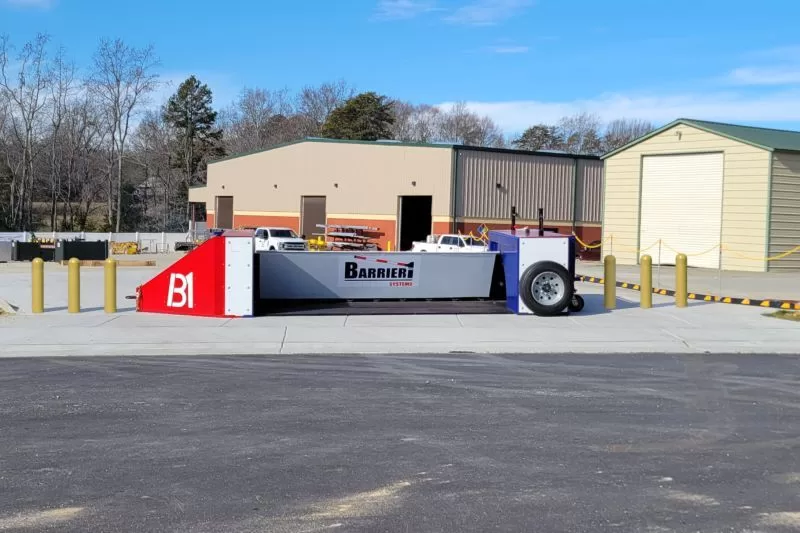The Only Guide for Wedge Barriers

14 and the surface 12 to which the barrier 10 is safeguarded might be made from concrete - Wedge Barriers. 2, the obstacle 10 is installed to or includes a support or subframe (e. g., anchor 30 received FIG. 2 )safeguarded under the surface area 12. The bather 10 might be bolted to the support or protected to the support by other mechanical fasteners. In the illustrated embodiment, the obstacle 10 consists of a wedge plate 16, which includes a portion that is substantially identical with the surface 12 when the barrier 10 remains in the retracted position. Simply put, automobiles or people may pass over the obstacle 10 when the obstacle 10 remains in the withdrawed setting and experience small altitude relative to the surface area 12 while on the barrier 10. As talked about in detail listed below, when the obstacle 10 remains in the released setting, the wedge plate 16 is held and sustained in a raised placement by a lifting mechanism of the obstacle 10. Additionally, the elements 18 may be bolted or otherwise mechanically coupled to one another. In this fashion, repair work or replacement of several components 18 might be simplified and streamlined. That is, repair service or replacement of single components
18 might be done quicker, conveniently, and price successfully. FIG. In specific personifications, the support 30 may be a steel framework consisting of plates, light beams(e. g., I-beams ), and/or various other frameworks that are secured within the foundation 14, which might be concrete. At the surface area 12, an upper side 28 of the anchor 30 might go to the very least partly subjected
, consequently enabling the attachment of the obstacle 10 to the anchor 30. g., basics threaded openings)in one or more beam of lights or plates of the support 30 might be revealed to the surface area 12. In this way, screws 32 or various other mechanical bolts may be made use of to protect the barrier 10 to the anchor 30. As the obstacle 10 is installed to the surface area 12 of the foundation 14, collection of particles and other product underneath the barrier may be lowered, and elements of the bather 10 might not be exposed to listed below grade environments. As suggested by referral character 52, the lifting device 50 consists of elements got rid of beneath the wedge plate 16. The parts 52 underneath the wedge plate 16 may include an electromechanical actuator, a web cam, one or more camera surface areas, and so forth. In addition, the review lifting mechanism 50 consists of a springtime assembly 54
The spring pole 58 is combined to a web cam(e. g., web cam 80 shown in FIG. 4) of the training mechanism 50. The springs 60 disposed regarding the spring rod 58 are kept in compression by spring sustains 62, consisting of a dealt with springtime assistance 64. That is, the fixed spring support 64 is repaired about the foundation 14 and the rest of the bather 10.
Everything about Wedge Barriers
g., spring assistance 65 )may be dealt with to the end of the spring rod 58 to enable compression of the springs 60. As the springs 60 are compressed in between the springtime supports 62, the springtime assembly 54 generates a force acting upon the cam coupled to the spring pole 58 in a direction 66. The staying pressure applied to
the cam webcam deploy the wedge plate 16 may be provided offered an electromechanical actuator 84 or other various other. Therefore, the spring setting up 54 and the actuator 84(e. g., electromechanical actuator)might run with each other to convert the cam and raise the wedge plate address 16.
As mentioned over, in the released position, the wedge plate 16 offers to obstruct access or travel beyond the barrier 10. The obstacle 10(e. g., the wedge plate 16 )may obstruct pedestrians or cars from accessing a residential property or path. If a lorry is taking a trip towards the released wedge plate 16(e. For example, in one situation, the security legs 86 may be extended duringmaintenance of the barrier 10.